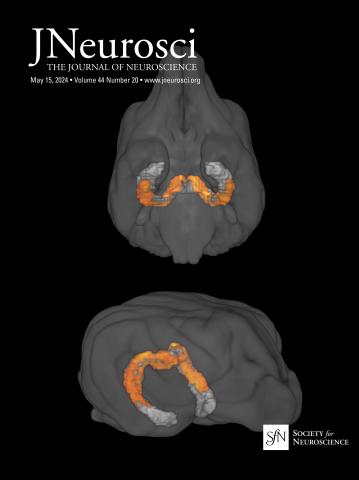Prevalent harmonic interaction in the bat inferior colliculus.
IF 4
2区 医学
Q1 NEUROSCIENCES
引用次数: 0
Abstract
Animal vocalizations and human speech are typically characterized by a complex spectrotemporal structure, composed of multiple harmonics, and patterned as temporally organized sequences. However, auditory research often employed simple artificial acoustic stimuli or their combinations. Here we addressed the question of whether the neuronal responses to natural echolocation call sequences can be predicted by manipulated sequences of incomplete constituents at the midbrain inferior colliculus (IC). We characterized the extracellular single-unit activity of IC neurons in the great roundleaf bat, Hipposideros armiger (both sexes), using natural call sequences, various manipulated sequences of incomplete vocalizations, and pure tones. We report that approximately two-thirds of IC neurons exhibited a harmonic interaction. Neurons with high harmonic interactions exhibited greater selectivity to natural call sequences, and the degree of harmonic interaction was robust to the natural amplitude variations between call harmonics. For 81% of the IC neurons, the responses to the natural echolocation call sequence could not be predicted by altered sequences of missing call components. Surprisingly, nearly 70% of the neurons that showed a harmonic interaction were characterized by a single excitatory response peak as revealed by pure tones. Our results suggest that prevalent harmonic processing has already emerged in the auditory midbrain inferior colliculus in the echolocating bat.Significance Statement Auditory cortex has long been suggested to be the main region for processing complex sound such as natural vocalizations. However, this cortex-centered view of complex stimuli processing was largely based on simple stimuli or their combinations, ignoring many crucial aspects of natural communication behaviors. Here, we took a neuroethological perspective to study the harmonic processing in the inferior colliculus, in the great roundleaf bat. We show that prevalent harmonic processing has already emerged in the auditory midbrain in the echolocating bat. Critically, harmonic interactions revealed by natural call sequences cannot be predicted by responses to either pure tones or altered sequences of missing call components. Our data suggest that auditory midbrain is involved in harmonic processing in the echolocating bat.蝙蝠下丘中普遍存在的谐波相互作用
动物发声和人类说话的典型特征是具有复杂的频谱时态结构,由多个谐波组成,并以有时间组织的序列为模式。然而,听觉研究通常采用简单的人工声学刺激或其组合。在这里,我们探讨了这样一个问题:在中脑下丘(IC),神经元对自然回声定位呼叫序列的反应是否可以通过操纵不完整成分序列来预测。我们利用自然呼唤序列、各种经处理的不完整发声序列和纯音,描述了大圆叶蝙蝠(Hipposideros armiger,雌雄均有)IC神经元的胞外单细胞活动。我们发现,大约三分之二的 IC 神经元表现出谐波交互作用。具有高谐波交互作用的神经元对自然叫声序列具有更大的选择性,而且谐波交互作用的程度对叫声谐波之间的自然振幅变化具有稳健性。对于81%的集成电路神经元来说,对自然回声定位呼叫序列的反应无法通过改变缺失呼叫成分的序列来预测。令人惊讶的是,近 70% 的神经元表现出谐波交互作用,其特征是纯音显示的单一兴奋反应峰。我们的研究结果表明,回声定位蝙蝠的听觉中脑下丘已经出现了普遍的谐波处理。然而,这种以大脑皮层为中心的复杂刺激处理观点主要基于简单刺激或其组合,忽略了自然交流行为的许多关键方面。在这里,我们从神经伦理学的角度研究了大圆叶蝠下丘的谐波处理。我们发现,回声定位蝙蝠的听觉中脑已经出现了普遍的谐波处理。重要的是,自然鸣叫序列所揭示的谐波相互作用不能通过对纯音或缺失鸣叫成分的改变序列的反应来预测。我们的数据表明,回声定位蝙蝠的听觉中脑参与了谐波处理。
本文章由计算机程序翻译,如有差异,请以英文原文为准。
求助全文
约1分钟内获得全文
求助全文
来源期刊

Journal of Neuroscience
医学-神经科学
CiteScore
9.30
自引率
3.80%
发文量
1164
审稿时长
12 months
期刊介绍:
JNeurosci (ISSN 0270-6474) is an official journal of the Society for Neuroscience. It is published weekly by the Society, fifty weeks a year, one volume a year. JNeurosci publishes papers on a broad range of topics of general interest to those working on the nervous system. Authors now have an Open Choice option for their published articles
 求助内容:
求助内容: 应助结果提醒方式:
应助结果提醒方式:


